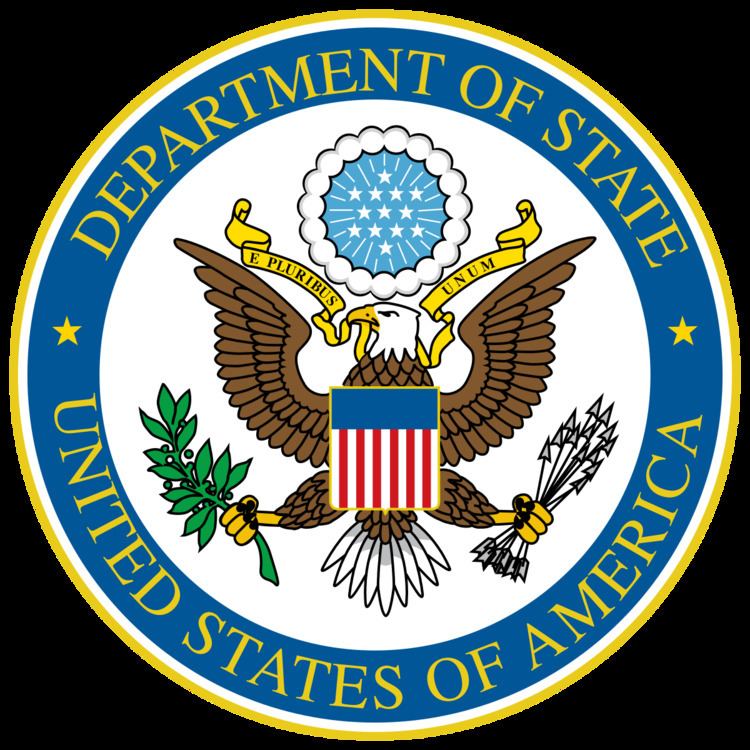Residence Beijing Formation March 1, 1979 | Inaugural holder Leonard Woodcock Website U.S. Embassy - Beijing | |
 | ||
Nominator The President of the United States | ||
The United States Ambassador to China (simplified Chinese: 美国驻华大使; traditional Chinese: 美國駐華大使; pinyin: Měiguó Zhùhuá dàshǐ) is the chief American diplomat to People's Republic of China (PRC). The United States has sent diplomatic representatives to China since 1844, when Caleb Cushing, as Commissioner, negotiated the Treaty of Wanghia. Commissioners represented the United States in China from 1844 to 1857. Until 1898, the Qing Empire did not have a system in place for the Emperor to accept the Letters of Credence of foreign representatives. From 1858 to 1935, the U.S. representative in China was formally Envoy Extraordinary and Minister Plenipotentiary to China. The American legation in Nanjing was upgraded to an Embassy in 1935 and the Envoy was promoted to Ambassador Extraordinary and Plenipotentiary.
Contents
- Chronology
- List of Ambassadors to the Republic of China
- List of chiefs of the US Liaison Office in Beijing
- List of Ambassadors to the Peoples Republic of China
- References
During the republican era, the U.S. recognized the Beiyang Government in Beijing from 1912 to 1928 and the Nationalist Government in Nanjing (and Chongqing from 1937 to 1945) from 1928 onwards. After the Communist People's Republic of China was established in mainland China in 1949 and the Kuomintang moved the Republic of China government from Nanjing to Taipei, Taiwan, the U.S. continued to recognize the Republic of China as the legitimate Chinese government and maintained its embassy in Taiwan. However, in 1973, the U.S. established a Liaison Office in Beijing to represent its interests in mainland China. In 1976, the Chief of the Liaison Office was promoted to the rank of Ambassador. In December 1978, the U.S. severed official relations with the Republic of China and in January 1979, established formal relations with the People's Republic of China. The U.S. Liaison Office in Beijing was upgraded to an embassy on March 1, 1979. The American Institute in Taiwan was established in 1979 to serve as the unofficial U.S. representative to Taiwan, with the director of its Taipei Office taking the role of a de facto ambassador. Jon M. Huntsman, Jr. served as U.S. Ambassador to China from 2009 until April 30, 2011. On March 7, 2011, President Obama announced his intention to nominate Commerce Secretary Gary Locke as Huntsman's replacement. Locke's nomination was confirmed by the United States Senate on July 27, 2011 by unanimous consent.
On December 18, 2013, Politico reported that the White House had selected long-time U.S. Senator Max Sieben Baucus from Montana to be the next Ambassador. On February 6, 2014, the Senate voted and confirmed Max Baucus to be Ambassador to the People's Republic of China.
On December 8, 2016, Iowa Governor Terry Branstad accepted President Donald Trump's nomination of him for the post of United States Ambassador to China.
Chronology
Representation is as follows (years refer to dates of actual service):
Qing Empire:
Republic of China:
People's Republic of China
List of Ambassadors to the Republic of China
The Communists took the Nationalist capital of Nanjing in April 1949, but Stuart was not recalled from China until August 1949. The United States did not recognize the new government of the People's Republic of China upon its founding in October 1949. The Consulate in Taipei was upgraded to an embassy in 1953, and therefore the Ambassador to China maintained residence at Taipei, Taiwan, in the Republic of China until relations were severed in 1979. (See: Former American Consulate in Taipei)
For a list of de facto U.S. Ambassadors to Taiwan since 1979, see list of AIT Directors at American Institute in Taiwan.
List of chiefs of the U.S. Liaison Office in Beijing
Between May 1973 and March 1979 prior to the official establishment of diplomatic relations, the United States dispatched a head of U.S. Liaison Office in Peking (now Beijing).
List of Ambassadors to the People's Republic of China
The United States established diplomatic relations with the People's Republic of China, and terminated them with the Republic of China, on January 1, 1979. The American Embassy at Taipei closed February 28, 1979, while the American Liaison Office at Beijing was redesignated the American Embassy on March 1, 1979.
